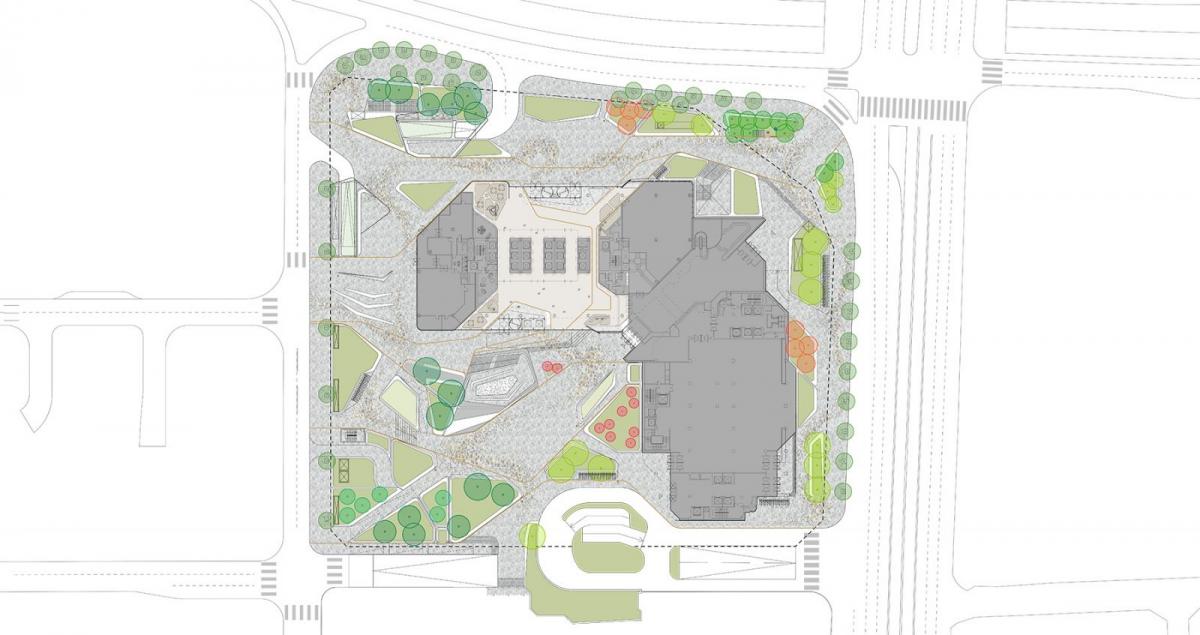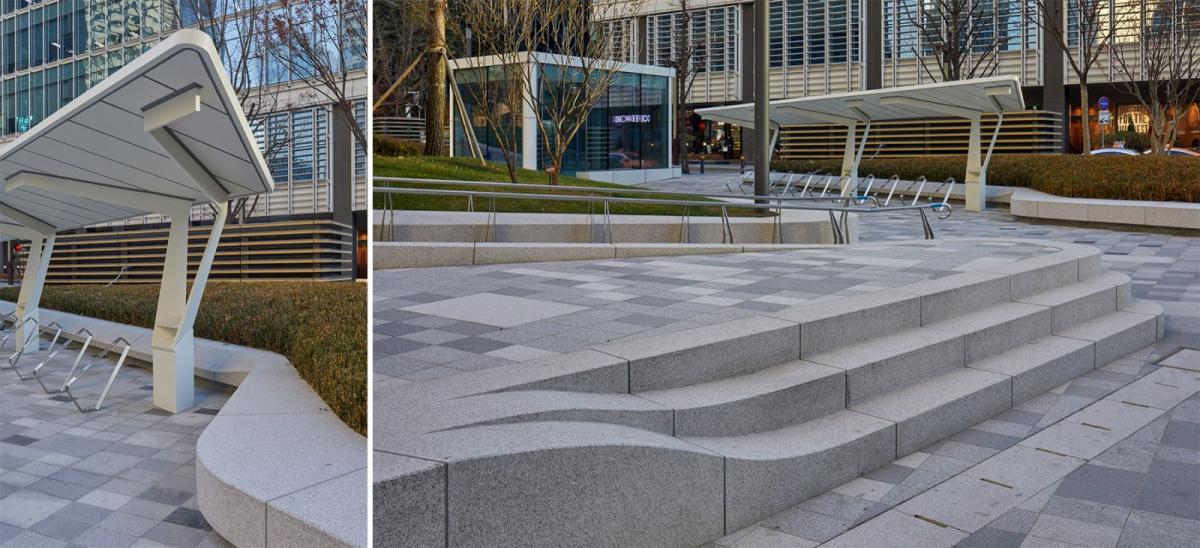
Hanwha Plaza

The design for the Hanwha Plaza is part of the assignment for the remodeling of the façade, entrance lobby, and the office interior of The Head Quarter Building of Hanwha. The new landscape and façade reflect Hanwha’s status as an environmental technology provider. The building's design was in the final for the Green Building Awards in 2014.
The building is located in the vibrant heart of the city, along the famous Cheonggyecheon stream. Before, the area was mainly used by cars, to access the underground car parking garage. As the Seoul government has mandated that all private plots be made partially public to increase the quality of public space in Seoul, this area called for greater accessibility, more greenery and a well laid-out and open space for visitors as well as local pedestrians.
The design for the plaza is representative, connecting to the surrounding plots and inviting people in from all sides.

The trapezium-shaped façade elements of the building consist of pv-panels. The pedestrian routes in the design for the plaza are accompanied by smoothly curved, elevated planters, their shape refers back to the façade elements. The elevated planters establish a strong and distinct identity and help define the routing to the building. Benches have been integrated into the planters situated along the main routes. To invite employees to come to work by bike, a bicycle shed has been constructed.
All entrances to the car parks are now covered with canopies on which sedum gardens are planted. One of the canopies has been made available for an art pavilion.
The layout of the square has one overarching style, but there are distinct atmospheres within the plan: rather more peaceful zones and more active and highly representative zones. The area is made up of three large plazas.
The Berlin Plaza; on which three panels of the original Berlin Wall are placed, the Media Park; with seats and a projection screen, and the Central Plaza; a multifunctional square with a sunken garden and a stage for performance. Throughout the area, the optimum use of space has been carefully considered.


The event zone is marked by an iconic canopy stretching out above the stage. The sunken garden, which lies behind the stage, also provides access to the underground car park.


The trees and shrubs were chosen in part to minimize water runoff and filter fine dust from the air. Different tree species, both evergreens and accent trees, are mixed in each planter. Each planter has one type of shrub. The blend of planters with different colours creates a lush experience throughout all seasons. Tall bamboo has been planted in the sunken garden. The hedges provide food and nesting opportunities for birds.


The materialization quality has been improved. The pavement is made of natural-stone granite blocks in different shades of grey. The main pedestrian routes are marked by a changing in their dynamic pattern of dark grey tiles and sandy tiles.

Led lines are integrated into the planters to accentuate the routing. The rest of the lighting is subtle and indirect. Minimalist lampposts provide enough light on the Plaza without causing light pollution. Previously mainly used by cars, the area is now a future-proof, multifunctional public space and a pleasant dwelling place for citizens of Seoul.

| location | Seoul, South-Korea |
| design | 2014-2018 |
| realization | 2020 |
| client | Gansam/Hanwha |
| in collaboration with | UNStudio, Arup, CA Landscape Design |
| photography | Rohspace |